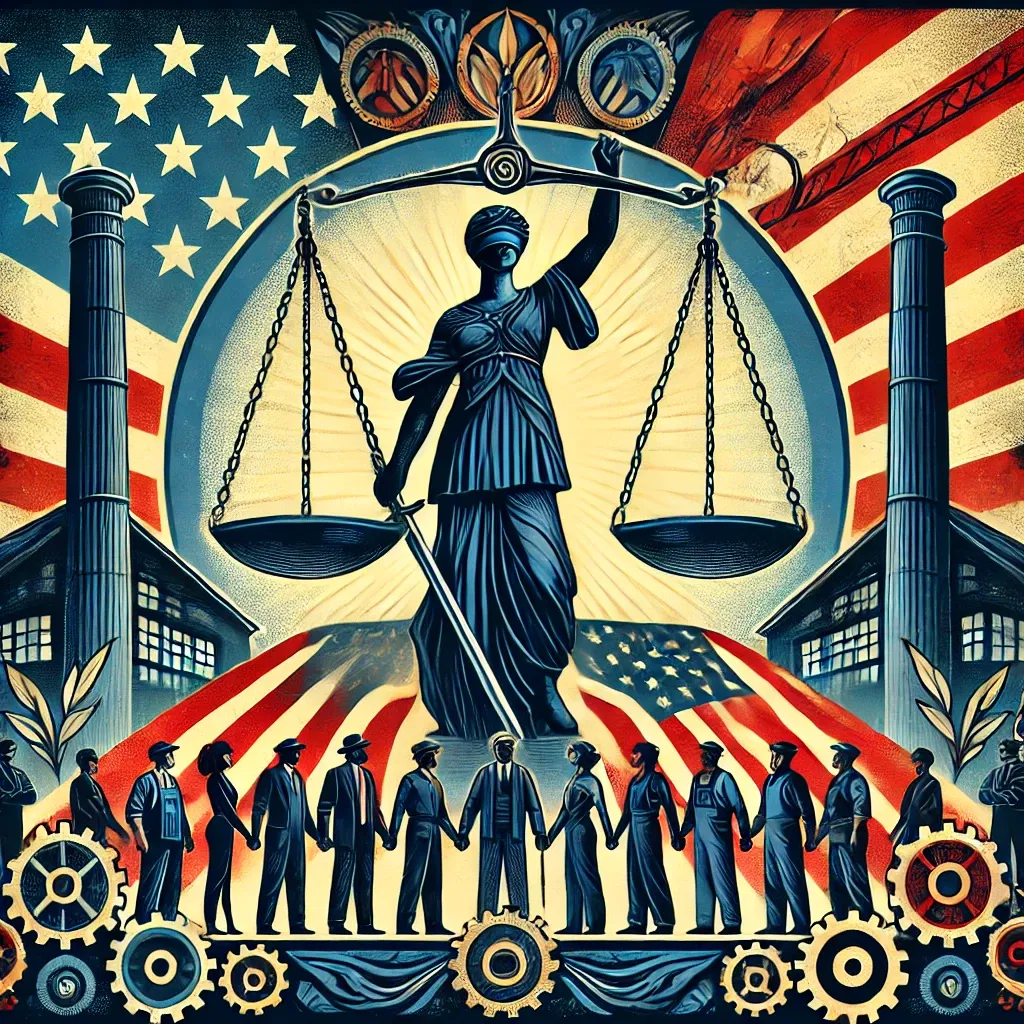The history of labor unions in the United States is marked by numerous legal battles that have shaped the landscape of workers’ rights. This blog post examines three pivotal court cases that significantly altered the course of labor unions and improved the lives of workers across the nation.
1. National Labor Relations Board v. Jones & Laughlin Steel Corp. (1937)
Background
In the midst of the Great Depression, President Franklin D. Roosevelt’s New Deal legislation included the National Labor Relations Act (NLRA) of 1935, also known as the Wagner Act. This act established the National Labor Relations Board (NLRB) and guaranteed workers the right to organize and engage in collective bargaining. However, its constitutionality was quickly challenged by employers.
The Case
Jones & Laughlin Steel Corporation, one of the largest steel producers in the country, fired ten employees for union activities. The NLRB ordered the company to reinstate the workers and provide back pay, but the company refused, arguing that the NLRA was unconstitutional.
The Decision
In a landmark 5-4 decision, the Supreme Court upheld the constitutionality of the NLRA. The Court ruled that Congress had the power to regulate labor relations under the Commerce Clause of the Constitution, as labor strife could have a significant impact on interstate commerce.
Impact
This decision was a game-changer for the labor movement:
- It legitimized the NLRA, providing a legal framework for union organization and collective bargaining.
- It marked a shift in the Court’s interpretation of the Commerce Clause, allowing for broader federal regulation of the economy.
- It paved the way for a dramatic increase in union membership and influence throughout the following decades.
2. United States v. Enmons (1973)
Background
The relationship between unions and violence had long been a contentious issue. The Hobbs Act of 1946 criminalized robbery or extortion affecting interstate commerce, but its application to union activities was unclear.
The Case
Several members of the International Brotherhood of Electrical Workers were charged under the Hobbs Act for using violence during a strike against Gulf States Utilities Company in Louisiana. The union members had fired rifles at company transformers and blew up a substation.
The Decision
In a surprising 5-4 decision, the Supreme Court ruled that the Hobbs Act does not apply to violence committed in pursuit of legitimate union objectives. The Court reasoned that Congress did not intend to criminalize violence during otherwise legitimate labor disputes.
Impact
While controversial, this decision had significant implications:
- It protected unions from federal prosecution for certain acts of violence during labor disputes.
- It drew a distinction between criminal extortion and legitimate labor union activities, even when those activities involve violence.
- It highlighted the need for clearer legislation regarding union activities and violence.
3. Communication Workers of America v. Beck (1988)
Background
Many collective bargaining agreements included “union shop” provisions requiring all employees to pay union dues. However, some workers objected to their dues being used for political activities they didn’t support.
The Case
Harry Beck and other employees of AT&T sued their union, the Communication Workers of America, arguing that the use of their compulsory dues for political activities violated their First Amendment rights.
The Decision
The Supreme Court ruled that unions cannot use non-member fees for political activities unrelated to collective bargaining. The Court held that the National Labor Relations Act only allows unions to collect from non-members the costs related to collective bargaining, contract administration, and grievance procedures.
Impact
This decision had far-reaching consequences:
- It established the right of workers to refrain from funding union political activities they disagree with, while still contributing to core union functions.
- It required unions to be more transparent about their spending and to establish procedures for workers to object to certain expenditures.
- It influenced subsequent legislation and court decisions regarding union dues and political activities.
Conclusion
These three cases – NLRB v. Jones & Laughlin Steel Corp., United States v. Enmons, and Communication Workers of America v. Beck – each represent significant milestones in the evolution of labor law in the United States. They illustrate the complex interplay between workers’ rights, union power, and individual freedoms that continues to shape American labor relations to this day.
While these decisions have had lasting impacts, it’s important to note that labor law continues to evolve. As the nature of work changes in the 21st century, new challenges and legal questions are emerging, ensuring that the relationship between workers, unions, and employers will remain a vital area of legal and social debate for years to come.
